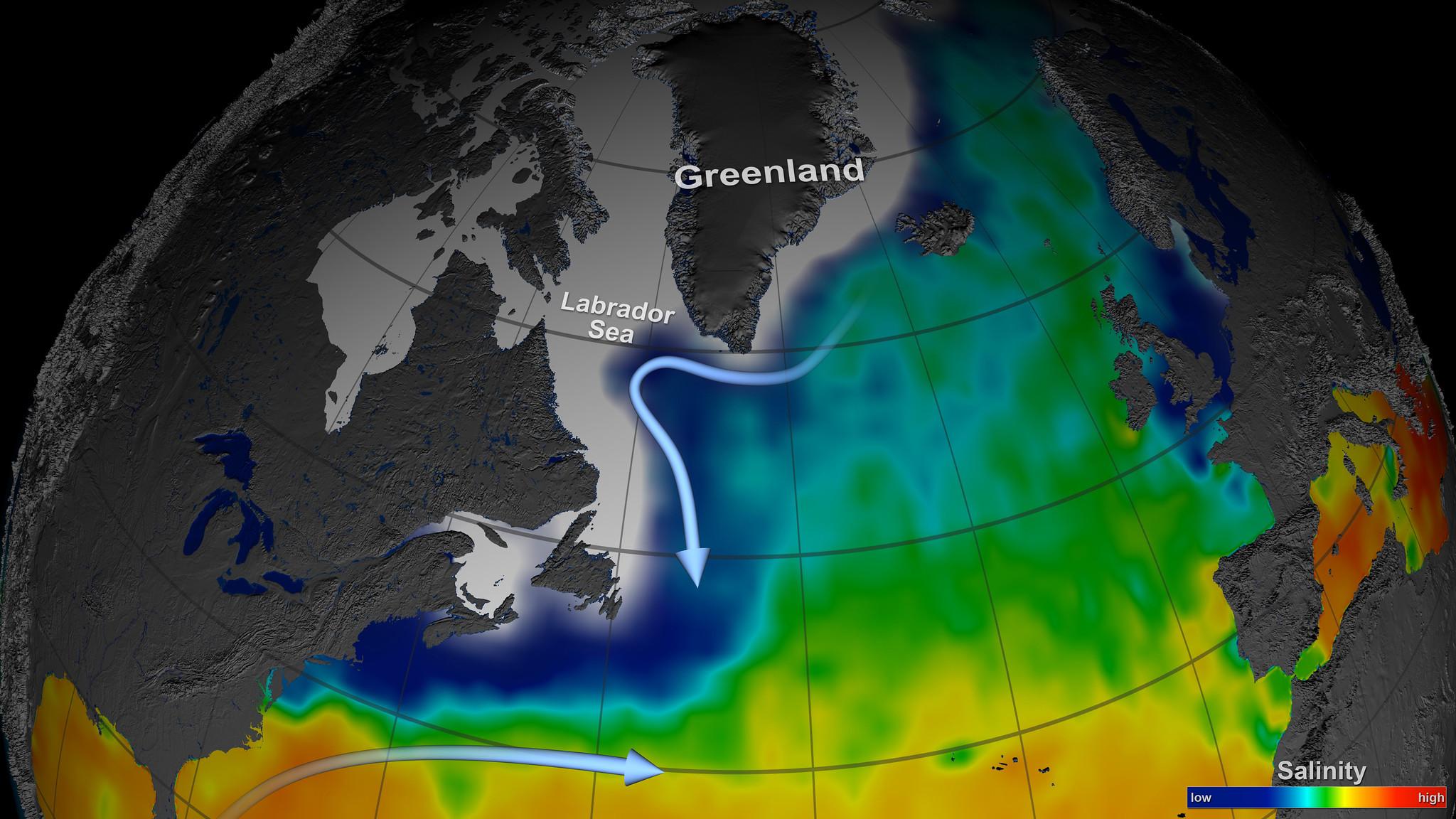
Submitted by Dr C.M. Martin-Jones on Thu, 27/10/2022 - 11:09
A new study involving Cambridge earth scientists has mapped out ocean currents in the North Atlantic over time, revealing changes in the movement of deep water tied to the growth and decline of ice sheets.
The research, published in the journal Nature Geoscience, measured isotopic tracers of ocean circulation in samples of ocean sediments collected from throughout the Nordic Seas, giving them a detailed map of the deep ocean during and after the last ice age.
The movement of water masses in the ocean is an essential mechanism within Earth’s climate system: storing and transporting heat, carbon, nutrients and freshwater across the globe.
The new study helps us understand the mechanisms linking the oceans with the climate system, “The extent to which ocean circulation can be impacted by the changing climate is of key importance to society, particularly with current global warming” said lead-author of the study Christina Larkin, who was a PhD student at Cambridge Earth Sciences when she conducted the research.
Global ocean circulation can be visualized as a conveyor belt that shuttles water around the globe depending on its density and salinity. The Nordic Sea is where this conveyor begins: warm water brought in by the Gulf Stream cools, sinks and moves south towards Antarctica, making room for more incoming water.
Larkin, who is now a postdoc at the University of Southampton, used neodymium isotope measurements of ocean sediments as a ‘dye tracer’ of deep ocean circulation in the Nordic Seas. In a collaboration with an international team of scientists, Larkin collected data on hundreds of sediment samples.
Their historical map gives high resolution snapshots of deep water as it formed and propagated over the last 35,000 years. For much of this period, the Nordic Sea was next to a large ice sheet which extended across Scandinavia. But around 18,000 years ago the ice started to retreat and freshwater poured into the Nordic Seas. Within a few hundred years sea level rose by as much as 10 metres.
For decades, scientists have theorized as to how the shifting ice cover impacted ocean circulation. A leading idea is that deep water formation in the North Atlantic shifted south to warmer climes during the last ice age, but other studies found contrasting evidence. This new research is the first to map out deep water movements in the Arctic in unprecedented detail, meaning the debate can finally be re-addressed.
Despite dramatic climate changes throughout the period they studied, the researchers were surprised to find that ocean circulation during the last ice age was similar to today. “Our study shows that ocean circulation has an inherent stability,” said study co-author Alexander Piotrowski from Cambridge’s Department of Earth Sciences. “These results leave us wondering how ocean circulation during the last ice age could be so similar to the way it circulates today — we still don’t know the reason for that.”
One of their findings was that ocean circulation during the last ice age was circulating strongly. “Fundamentally, in the past as today, the Nordic Seas were a key location of Atlantic deep water formation." said Larkin. That result is surprising, said Larkin, as the climate was so different at that time. “This research overturns the previous hypothesis that deep water formation was absent in the Nordic Seas during the last glacial maximum,” said Larkin.
Their measurements also allow them to see the impact that melting ice can have on ocean circulation, “Although ocean circulation was stable over long time periods, we show that this stability was disturbed by ice melting at the end of the ice age,” said Piotrowski.
The researchers found that, at the end of the last ice age, water from melting ice flowed into the ocean, disrupting the stable ocean circulation and causing it to weaken. This disruption lasted for a few thousand years, before it returned back to a strong circulation like today.
According to Piotrowski, the results show periods of both stability and instability, thereby informing our understanding of how the melting of ice and release of meltwater — a scenario we are currently seeing with anthropogenic warming — could influence ocean circulation in the future.
Model predictions show what might happen to the oceans under different climate change scenarios. But models need ground-truthing with data to show how our climate and ocean circulation interacted as ice sheets fluctuated. This is especially pertinent because future melting of the Greenland ice sheet may cause a similar disruption to the ocean circulation.
Larkin, C. S., Ezat, M. M., Roberts, N. L., Bauch, H. A., Spielhagen, R. F., Noormets, R., ... & Piotrowski, A. M. (2022). Active Nordic Seas deep-water formation during the last glacial maximum. Nature Geoscience, 1-7.
